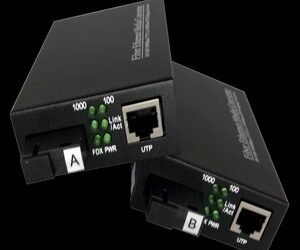The OSI model (Open Systems Interconnection model) is a framework for understanding how communications protocols work. It divides the process of transmitting data across a network into seven different layers. Each of the layers performs a specific function. The OSI model is a logical model that helps designers and engineers understand how different protocols work. How they function together and integrated into a larger network is further clarified by the use of this reference.
Understanding the OSI model answers how different networking protocols work to transmit data across a network. There are seven distinct layers of the OSI model.
The Different Layers in The OSI Model
- Physical layer:
This layer is concerned with the physical transmission of data over a medium, such as a wire or wireless connection. It specifies the electrical, mechanical, and functional characteristics of the interface between the communication equipment and then the transmission medium.
- Data link layer:
This layer is responsible for transmitting data over a physical link between two devices. It establishes, maintains, and terminates connections between devices and further provides error-free transmission of data.
- Network layer:
This layer is responsible for routing data between devices on a network. It determines the best path for data to travel and provides logical addressing so that devices on the network can communicate with each other.
- Transport layer:
This layer ensures that data is delivered reliably and in the correct order between devices on a network. It provides end-to-end error recovery in addition with flow control.
- Session layer:
This layer establishes, maintains, and terminates communication sessions between devices. It provides a means for two devices to synchronize their communication to exchange data in a structured manner.
- Presentation layer:
This layer is responsible for the syntax as well as the semantics of the data being transmitted. It ensures that data is properly formatted and encoded for transmission. It also checks if the data is interpreted correctly at the receiving end.
- Application layer:
This is the top layer of the OSI model and is responsible for providing services to the user. It provides a common interface between the application software and the network. In short this layer allows applications to communicate with each other across the network.
OSI model from the perspective of Network Engineers
The OSI model is primarily used in the field of network engineering. It provides a framework on how different networking protocols work.
The model can thereafter help in device integration into a larger network. Network engineers use the OSI model to design, implement, and troubleshoot network systems and to understand how different protocols function at each layer of the model.
For example, a network engineer might use the OSI model to understand how data transfers over a physical link between two devices at the data link layer. The OSI model answers the data route between devices on a network at the network layer.
The OSI model helps to understand transport protocols. It ensure data transfer is reliable and correct order between network devices. In addition how the presentation layer is responsible for the syntax and semantics of the data in transmission.
Overall, the OSI model is a useful tool for network engineers as it provides a standardized way of thinking about and understanding the different functions and protocols involved in transmitting data across a network.
Some examples of Protocols
For example the protocols associated with each layer of the OSI model are:
- Physical layer: Ethernet, Wi-Fi, Bluetooth, fiber optics
- Data link layer: Ethernet, Wi-Fi, Bluetooth, point-to-point protocol (PPP)
- Network layer: Internet Protocol (IP), Internetwork Packet Exchange (IPX), AppleTalk
- Transport layer: Transmission Control Protocol (TCP), User Datagram Protocol (UDP)
- Session layer: Network File System (NFS), Remote Procedure Call (RPC)
- Presentation layer: ASCII, Unicode, JPEG, MPEG
- Application layer: HTTP, FTP, SMTP, DNS
Note that these are just a few examples. Nevertheless there are other protocols in use at each layer of the OSI model.
It’s important to note that the OSI model is a logical model.Some protocols may span multiple layers of the model, and some protocols may include functionality from multiple layers.
However, the OSI model is still a useful framework for understanding how different protocols work together to transmit data across a network.
Additionally to read more from us here is our blog page. Feel free to contact us at info@insighttechintl.com.
Author: Subin Shrestha







0 Comments